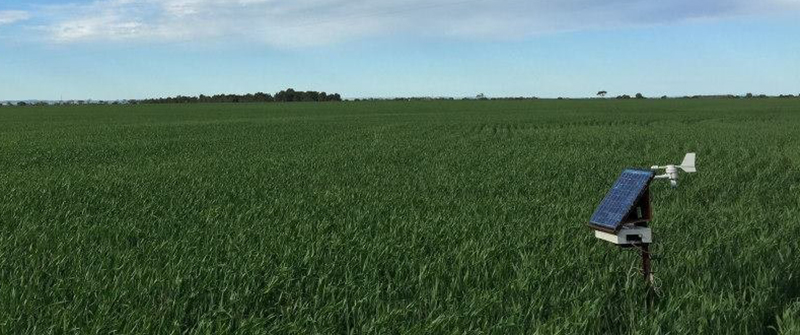For their entry to the Hackaday Prize, the team behind SentriFarm is solving a big problem for farmers in Australia. Down there, farms are big, and each paddock must be checked daily. This means hours of driving every day. Surely a bunch of sensors and some radio links would help, right?
This is the idea behind SentriFarm: a ground station that reads air temperature, atmospheric pressure, wind speed and direction, rain, light, UV and smoke, and relays that back to a central node. Yes, it’s basically a wireless weather station, but the sheer distance these sensors must transmit adds some interesting complexity.
The SentriFarm team is hoping to get about 10km out of their radio system, and they’re using a long-range, low power radio module to do it. This data is received by the ubiquitous radio towers found on Australian farms and sent to a database on the farm’s network. This data can be combined with data from the local weather service to get an accurate picture of exactly what’s happening in each paddock.
You can check out the SentriFarm project video below.






















That wind vane/anemometer should be mounted well above the solar panel. As per the headline photograph, the sensors will be shielded when the wind is coming from the left of the photograph.
The photo shows a mockup constructed for the purpose of producing the video
Just to clarify, the daily check is only mandatory during cropping season here, to ensure it is safe to perform cropping without causing a bushfire. Farmers would surely like to have continuous localised and historical information about their crop the rest of the time but is usually impracticable, our project will follow-on by improving access to data generally.
Remote sensing and sensors on the ground.
Australia is a model of life on earth in the future.
After the mess! Doing with what’s left.
Sounds a whole lot like Automatic Packet Reporting System. I hate to say it depending on location practically anyone could use amateur radio allocations with little chance of being caught. Keep the antennas and power as low as possible, and use a limited number of beacons. In the event issuing challenges to the ham community isn’t your style, no doubt off the shelf WiFi equipment could be made to work .
There’s no reason to use amateur bands when there are license free ISM bands. Also, a business license isn’t prohibitively expensive for most businesses.
Check out http://www.climate.com http://www.farmlogs.com and http://www.agrible.com
My father shared these with me yesterday. They can track and report basic weather data free. It looks like they might offer other data for a fee. Very cool stuff with minimal effort.
Pretty project. Some ideas that comes to my mind : wifi can easily cover that type of distance with non-amplified directional antennas, even home made. Some cheap routers converted with openWrt can be used to manage the communication. This can cut down the costs.